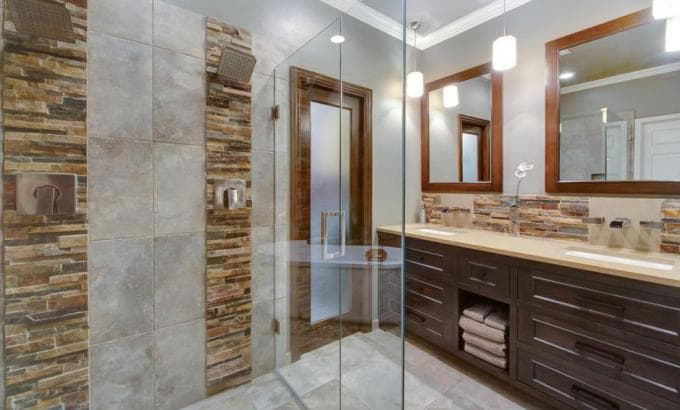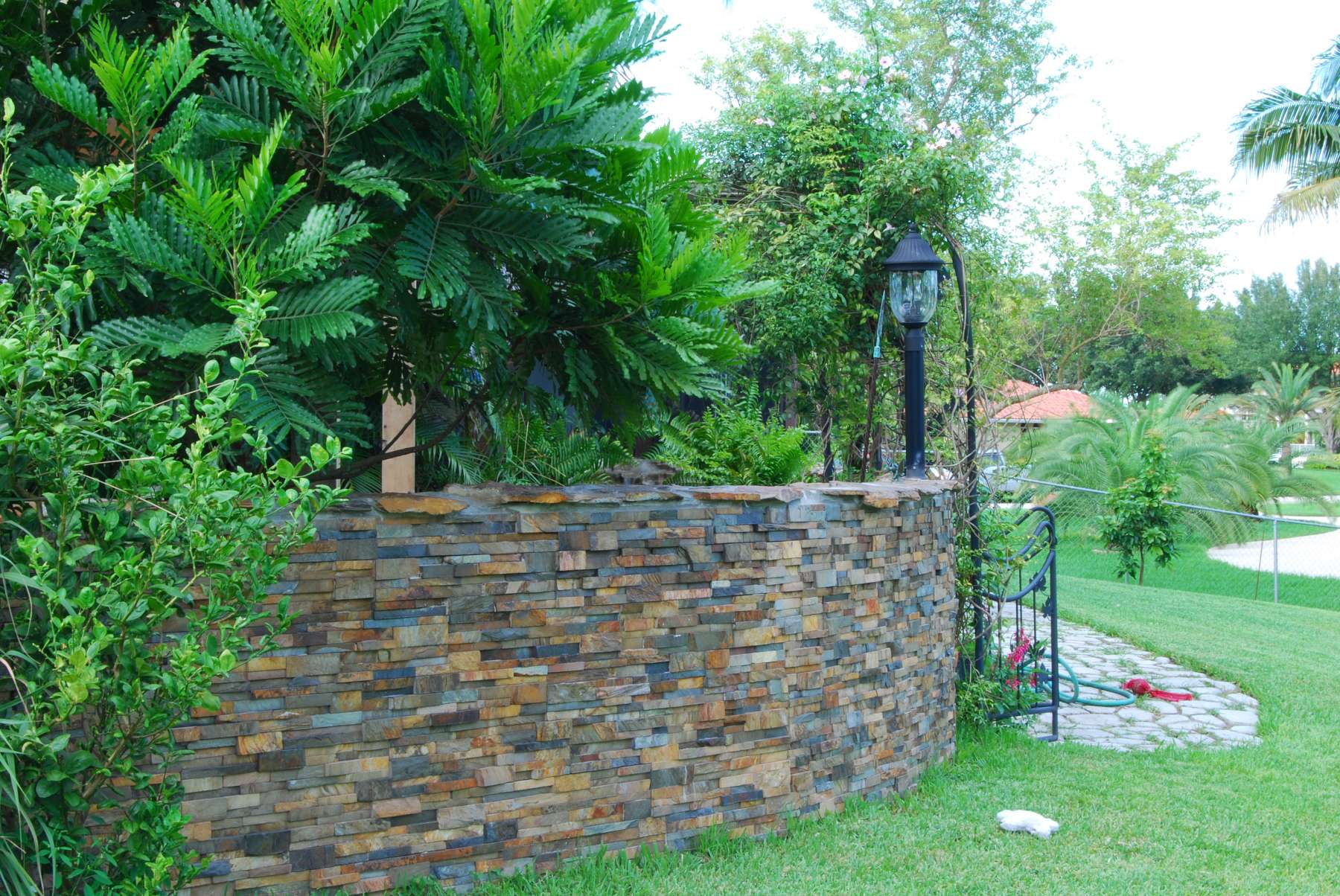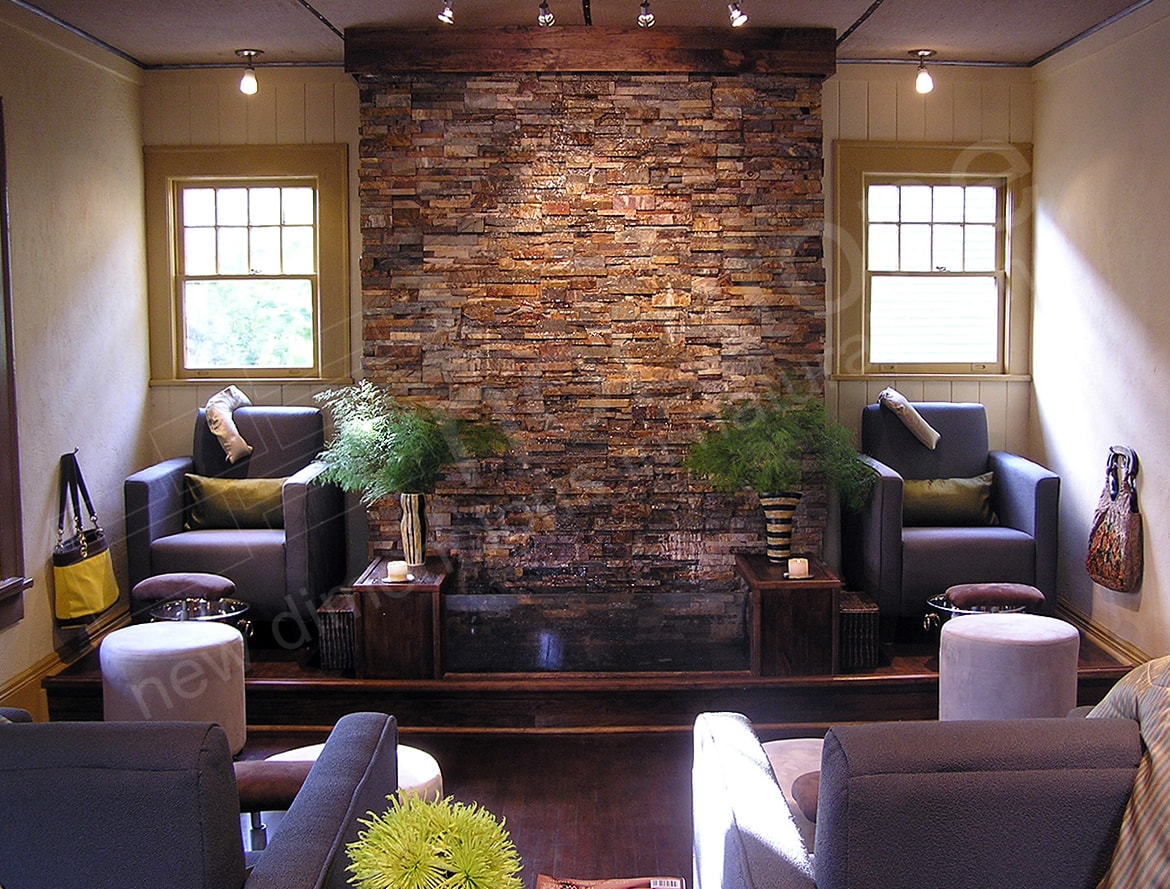How to Seal Stacked Stone
Stacked stone is a one of the most durable building materials on the planet, but even with that accolade there are still a variety of reasons why stacked stone should be sealed post installation. This can range from the type of installation such as exterior vs interior or wet vs dry, what kind of stone it is, and sometimes sealing the stone can just be used to create a specific visual effect desired. Most sealers for natural stone are penetrating, meaning they soak into the stone and don’t exist just topically, and form a protective barrier that helps prevent any build up on or deterioration of the stone face. Let’s dive a little deeper into the reasons why to seal stacked stone and then learn how to apply the sealer as well.
Exterior installations and installations where the stone is going to be in or around water, such as a stacked stone pool wall, fountain, or other water feature, should all be sealed after installation. The sealer forms a protective barrier against the elements, especially water, which have the potential to damage a stacked stone installation, especially over time and in areas subject to freeze – thaw cycling.

It’s also always a good idea to seal certain types of stone. Some stone, like limestone and travertine is more porous and sealing it helps prevent staining. Other types of stone including slate can be high in iron content so a good quality seal prevents rust spotting when exposed to moisture. The manufacturer of the stone product, or the local outlet where the stone is purchased from should be able to tell you if a certain type of stone absolutely needs sealed, and in general there’s really no harm in sealing stone even if it’s not a required step in the installation process for your project. For Norstone products, we recommend that all colors of our Standard Series and XL Series Rock Panel be sealed for exterior and water applications. Norstone’s Lynia IL Tile and Aksent 3D Panels should be sealed in all applications, both interior and exterior.
Beyond the protective value of a sealer, they can also be used to create certain visual effects desirable in many installations. Good examples of this are color enhancing sealers which darken up natural stone and high gloss sealers which leave behind a semi reflective sheen on the stone surface. Since these sealers are designed for a specific effect we always recommend making sure they are compatible with your stone and to test the sealer on a sample piece to see that it achieves the desired effect before committing it to an entire wall.

As you might expect, there are a lot of different natural stone sealer options to choose from. Some of the key differences in sealers is if they are water based or oil based and if they are penetrating or topical. Always check with the manufacturer of the stone product you are working with to determine what’s right for your stone. For all Norstone products we recommend sealers that are water based and penetrating.

As far as the actual application of the natural stone sealer goes, the best and easiest way we’ve found to apply sealer is with a hand held pump sprayer. This handy tool is readily available in the garden center of any home improvement store and most come with an adjustable tip to allow for a wider spray pattern to be used. The key to applying sealer to stacked stone is to do multiple light coats versus fewer, heavier coats. Allow the sealer time to soak into the stone before making another pass. When you start to see the sealer sit on the surface of the stone and not soak in any more dab the excess sealer off with a cloth so it won’t dry and leave a haze. Sealers will need to be re-applied every so often, based on the sealer manufacturer’s recommendation and in field testing of how strong the original seal is holding up.
Sealing is a relatively easy and inexpensive maintenance item that will protect and enhance the investment you’ve made in a stacked stone wall. Here at Norstone we’re happy to share our expertise and answer technical questions about sealing and stacked stone in general, so contact us today and thanks for learning all about sealing stacked veneer with us today!
.png)



